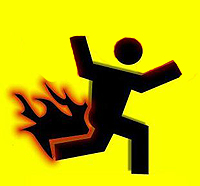Post
by ranger » July 9th, 2011, 4:32 am
As I have been mentioning, OTErg, the most surprising, because entirely unnecessary, limitation of veterans is their glaring technical weaknesses.
These weaknesses have nothing to do with losses in aerobic capacity, reduced training time, lifestyle diferences, or any of the other things that might slow down a veteran rower relative to younger rowers, including a younger self.
Just rowing normally, the best young rowers get half again as much work done per stroke than veteran rowers.
Many veteran lightweights pull 9 SPI; elite young lightweights pull 13 SPI.
Many veteran heavyweights pull 11 SPI; elite young heavyweights pull 16 SPI.
I suspect the culprit in all of this technical decline with age is the closely integrated organization of the rowing stroke, especially the four parts of the drive: Catch-PUSH-PRY-Finish.
If other veterans rowers are anything like me, I would guess that without a _great deal_ of pretty frustrating and difficult work on technique, they botch, pretty badly, all four stages of the drive.
For instance, at the catch, I would guess that most veterans do not really get well forward with their backs, up on the balls of their feet, at full slide, with relaxed shoulders and abs. I know that I certainly didn't. Rather, they short slide, tense up their shoulders and abs by pulling too early with their upper body, and start swinging their back, right from the get-go, expending much of the contribution of back and arms at the catch in order to support a weak push with the quads. This sort of catch leads to an _enormous_ close in peak force with the legs, as much as a 50% loss.
Once the catch is botched in this way, then the PUSH with the heels, hams, and gluts is necessarily botched, too. Unless your hips remain closed and forward, and therefore well braced, it is very difficult to be fast enough with the legs in order to lift your weight off the seat with your heels and hams and hang on the handle, especially at low drag, with a tensed upper body, and with slow, old legs. If your legs are slow and poorly braced, it is also hard to be fast enough with them, so that they get pushed through before opening the hips and swinging the back. And, of course, if you have already opened the hips and swung the back, the issue is moot. The center of the stroke becomes slow and poorly sequenced. The levers all work together, and in slow motion, like a spoon caught in molasses.
After this doubly botched beginning, the PRY of the stroke is lost entirely--for multiple reasons. The upper body was all tensed up long and ago and therefore is still improperly braced for a good swing with the back. And, anyway, the back has already been swinging, so isn't even available. More seriously, though, since the core was tensed up at the catch, it _can't_ be tensed now to get the kind of speed with the back that is needed to accelerate the chain after the use of the legs. To compensate for this, the legs are used here, much too late and much too slowly, so that the force on the handle doesn't collapse entirely, and to do this, the heels are the best supports at the footplate, so there is no way to get back up on the balls of the feet in order to get an effective pry at all with the back, even if the back were still available for swinging.
Then, at the finish, since the heels are still planted at the footplate, it is also impossible to get appropriate pressure forward at the footplate to get a fast finish with the arms, braced against the back. The finish is done on the heels, rather than on the toes, and even so, with little speed, and therefore force.
With all four of the parts of the drive botched in this way, the rowing stroke becomes like a slow motion picture of the steady opening of a flower, OOOOOPPPPPEEEEENNNNN, rather than like a whiplash, with multiple sources of forceful, braced, independently executed but closely timed and sequenced leverage: Catch-Push-Pry-Finish.
Result: 50% of the potential power in the stroke is lost.
Of course, there are other ways to go fast in rowing rather than just getting a lot of work done on each stroke. But for other reasons, these other ways are not as available. One of the magically paradoxical things about rowing is that, all things equal, the more work you do on the drive, the more time you get to rest on the recovery. As the drive quickens, the recovery lengthens. The ratio rises. On the other hand, if you have a weak drive, the drive time lengthens and the ratio falls. If this weren't the case, it is conceivable, I suppose, that an older rower with good aerobic capacity might be able to stroke weakly but raise the rate so radically that they indeed compensated for their technical weakness. That is, the veteran might be able to take half strokes but raise the rate to 60 spm for 2K, rather than putzing along at 30 spm with full strokes. This is _very_ hard to do, though, if the veteran is already in a 1-to-1 ratio at 40 spm. You can only eggbeater along so fast. Somewhere around a 1-to-1 ratio is the limit to eggbeatering. You have to have enough time to get up the slide for the next stroke. Unfortunately, 40 spm using a half stroke is only the equivalent of 20 spm with a full stroke. So, this eggbeater strategy can't get the job done of catching up with the elite younger rowers, either, especially if elite younger rowers, taking full strokes, can rate 40 spm themselves, and in a 2-to-1 ratio.
ranger
Rich Cureton M 72 5'11" 165 lbs. 2K pbs: 6:27.5 (hwt), 6:28 (lwt)
